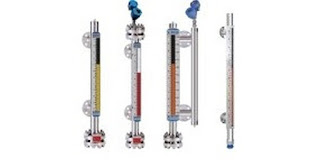https://millerenergy.com
908-755-6700 NJ
610-363-6200 PA
A blog specializing in pressure, temperature, level and flow instrumentation, control valves, process analyzers, and all other areas of process measurement. Courtesy of Miller Energy, a New Jersey, New York, Pennsylvania, and Ohio process instrumentation Rep and Distributor.
 |
| Radiometric level detection (RONAN) |
 |
| Sources and Detector Mounted External to Vessel |
 |
| Low Level Source and Detector Mounted External to Vessel |
 |
| Refractometer for pharmaceutical use (K-Patents). |
 Producing biopharmaceuticals is one of the world’s most demanding manufacturing processes.
Producing biopharmaceuticals is one of the world’s most demanding manufacturing processes. |
| Displacer Transmitter (Magnetrol) |
 |
| Paperless and Wireless Yokogawa GX20W |
 |
| Pressure switch in an explosion-proof housing. (United Electric) |
 |
| Differential pressure switch. (United Electric) |
 |
| NO vs. NC electrical switch contacts. |
 |
| Bimetal thermometers have a place in modern process measurement systems. Image courtesy Wika |
 |
| Mass Flow Controller - Cutaway View Image courtesy Brooks Instrument |
 |
| Pulsar R86 non-contact radar level transmitter. Image courtesy Magnetrol |
 |
| Composite construction, along with other targeted features, make the ASCO 212 Series a good choice for membrane water purification systems and equipment. Image courtesy Emerson - ASCO |
 |
| Flare monitoring requires specialized instruments to meet regulatory requirements. |
 |
| The Process Instrumentation Selection Tool from Yokogawa enables the user to make detailed product selections with a few clicks. Image courtesy Yokogawa |
 |
| A specially configured temperature sensor can improve measurement response and process control. Image courtesy Applied Sensor Technologies |
 |
| The AXW series of magnetic flow meters is available in a range of sizes with corrosion resistant lining. Image courtesy Yokogawa |
 |
| Solenoid valves for industrial process control applications Image courtesy Asco Valve |
 |
| Magnetrol's model 706 embodies the best of guided wave radar level measurement. Image courtesy of Magnetrol |
 |
| Configurations of magnetic level gauges Image courtesy Orion/Magnetrol |
 |
| Magnetic flowmeters are well suited for flow measurement with conductive fluids. Image courtesy Yokogawa |